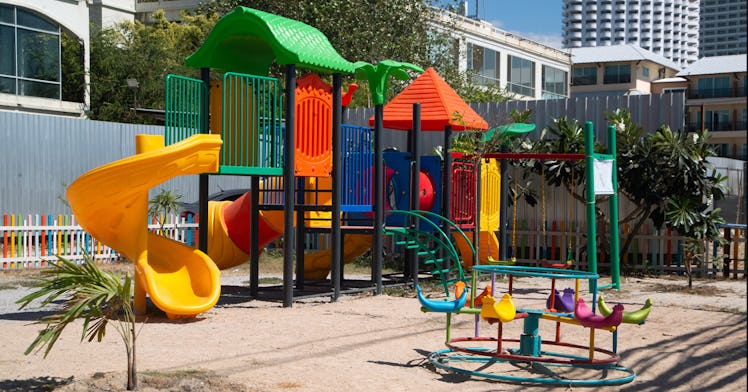Why Daycares Will Open Slowly After the Pandemic
One of the most important industries might struggle to re-open.

Much ink has been spilled about the economic impacts of the shutdowns of the Coronavirus pandemic that have been enacted to save lives. Many millions of Americans have been laid off and many millions more will likely be, restaurants have closed, schools have shut down, offices are empty, and, yes, child care centers‚ where many working parents were dropping their kid off before they headed into work, in a move that feels like it was that of a lifetime ago — may not be able to re-open, some reports suggest.
In many states across the country, over half of the daycare centers have been closed down. In Florida, over half of child care providers were closed due to low enrollment and low revenue. While that clearly makes sense right now, the problem is not that daycare isn’t running right now – it’s that the backbone of working American parents might not be able to re-open.
Child care centers that don’t receive any government funding or subsidies will be hit the hardest, as they won’t be able to make up enrollment costs through government reimbursement. Instead, centers in middle-class and upper-class neighborhoods will lose the most revenue and may struggle to re-open once this all blows over. In the meantime, the capacity of child care centers won’t be able to meet the demands of parents returning to the office.
In North Carolina alone, administrators of the state’s early childhood education program estimate that up to one-third of child care facilities could close permanently — not just temporarily to keep up with social distancing guidelines — if they don’t receive financial relief from the North Carolina legislature.
Like in Florida, child care centers that receive subsidies from the government are doing better than those who don’t, but those funds still aren’t enough to cover the costs of their employees and the loss in revenue from kids no longer trending their daycare. Plus, given that like in Florida, over half of the state’s child care facilities have closed, those that have stayed open have been walloped by demand from essential workers who are parents who need their kids to go somewhere during the day.
Politicians have seen what’s happening to the child care industry and how likely gutted and cash-strapped it will be as the economy re-opens and have suggested ways to inject funds into centers so that they don’t close permanently, leaving parents in a bind. Senators Elizabeth Warren and Tina Smith have released a $50 billion proposal that would fuel cash into the child care system to provide hazard pay to workers, and help providers keep paying their staff and for their facilities while they are closed, and to shore up the system by boosting wages, among other measures, for when the future comes.
“When the time comes, we will not be able to rebuild our economy if this country’s child care system has collapsed beneath the economic burden of this pandemic,” Smith and Warren warn. As it stands, only $3.5 billion has been set aside for the child care industry since this pandemic wrought havoc on the economy and many experts think that many daycare centers may never reopen, and what centers that do will be unaffordable and overcrowded. Unless the child care industry basically gets a bail-out, when things “go back to normal” a major driver of the economy — the thing that lets parents go to work, make money, and buy things — will be broken. The economy won’t be able to re-start at all.